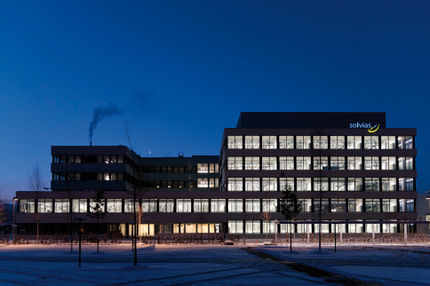Government Initiatives to Encourage Adoption of Healthcare IT Solutions in Poland, Finds Frost & Sullivan
Advertisement
Various initiatives by the Polish Government, coupled with funding from the European Union (EU), have been driving the adoption of IT systems by the healthcare sector. The acceptance of the Euro as Poland’s currency is set to further fuel IT funding by the EU in the country. New analysis from Frost & Sullivan, Social and Economic Benefits of Healthcare IT in Poland, finds that Poland ranks below the Organisation for Economic Co-operation and Development (OECD) average in terms of healthcare spending per capita. However, efforts to modernise the healthcare structure are set to galvanise the uptake of IT systems by the healthcare sector.
The financing of the Polish Healthcare system is divided into public (66 per cent) and private funding (34 per cent). The Polish government has undertaken steps to contain the growing healthcare costs by shifting the costs to service users and securing more value for money for the contracted services. In spite of these actions, the public healthcare expenditure is constantly growing from 26.2 billion USD in 2009 to an expected 36.9 billion USD billion in 2014. Private spending amounted to 12.1 billion USD in 2009 and is expected to grow at a compound annual growth rate of about 11 per cent until 2014. At the same time, the market experiences a growing investment into the private healthcare sector by local operators such as SwissMed, Medicover, Lux Med, Enel-Med, Carolina, Euromedicare (EMC), Adamed and international players like Asklepios and Rhön Klinikum.
“IT investment by the private sector is increasing,” notes Frost & Sullivan Industry Analyst S. Priyan. “This is boosting the potential pool of funds for healthcare IT systems in the Polish private healthcare sector.” This sector is investing larger amounts on IT adoption than its public sector counterpart, thereby promoting overall market potential in the country.
However, low levels of acceptance by healthcare providers is creating roadblocks in the implementation and utilisation rates of healthcare IT solutions by the Polish healthcare sector.
“Healthcare providers have shown lower acceptance levels of IT systems than most other service sectors in Poland,” explains Priyan. “While the reluctance of healthcare providers acts as a restraint to overall market expansion, it also creates obstacles to penetration and utilisation rates of these healthcare IT systems.”
There are key aspects missing in the Polish Healthcare IT market in order for the country to reach the European average level of development. Even though about 50 per cent of the general practitioners use the computer to record patient’s administrative data and 40 per cent to record patient’s medical data, the number gets significantly lower when it comes to data transfer (both medical and administrative), decision support systems usage, the transfer of laboratory results, or e-prescribing.
Furthermore, the interoperability of already implemented IT solutions within a facility as well as communications systems between facilities (for example between GP and laboratory) is insufficient. Neither a system of central databases and registers for the healthcare system, nor an improved access to healthcare information, like Web portals or e-communication in healthcare, are in place.
Healthcare IT system vendors should work closely with healthcare providers and demonstrate the benefits and positive implications related to the implementation of IT solutions in healthcare. They should also attempt to consolidate their solutions, providing more value-for-money to the healthcare sector.
“The main advantages of implementing e-health systems include optimal management of workflow, mobility of patients and health professionals, significant savings on time, money and effort, better decision support at point of care, reduced number of possible mistakes and increased security and patient safety”.



















































